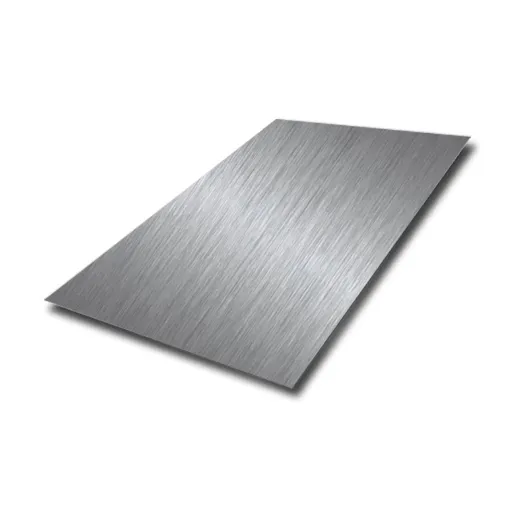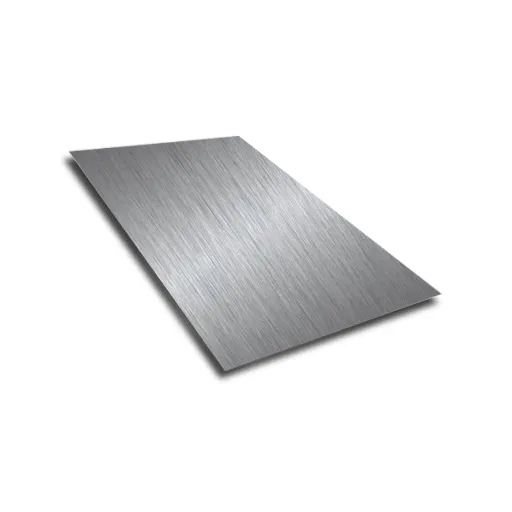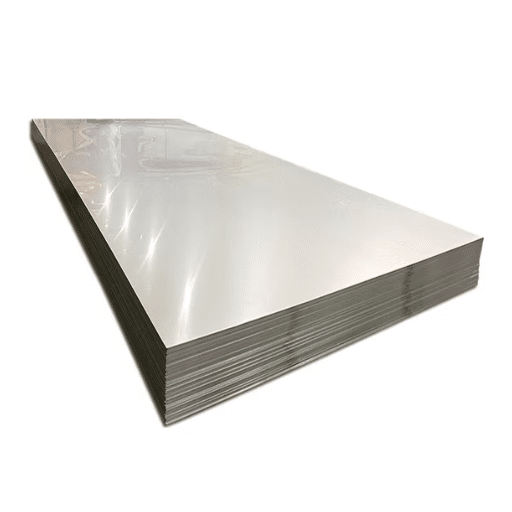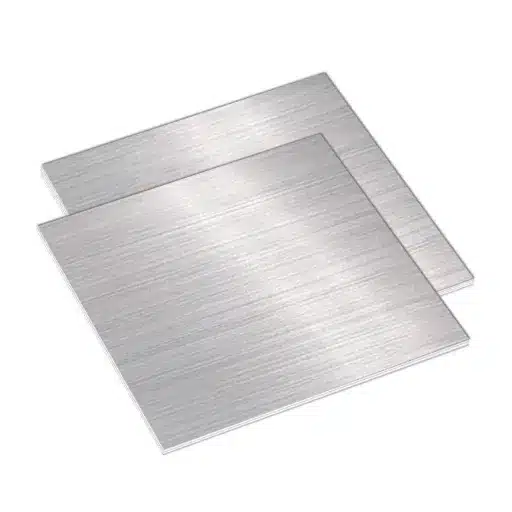When stainless steel is mentioned, 440 remains one of its most multi-purpose and widely used grades in applications where high strength, wear resistance, and corrosion resistance are required. Here lies the classic instance in which our 440 stainless steel price manifests as that region where performance meets dependability amid industrial tools, medical devices, and fine cutlery. But what makes it stand apart? How does its composition influence properties, and why is this steel so much relied upon across sectors? This exhaustive guide will analyze in depth the pertinent characteristics, variants, real-world applications, and maintenance of 440 stainless steel so that you fully appreciate the steel’s importance and make intelligent choices about its use. If you are from engineering or manufacturing, or if you are simply curious about advanced materials, then this article will make sure you gain in-depth knowledge about one of the hardest stainless steel grades available today.
Chemical Composition of 440 Stainless Steel
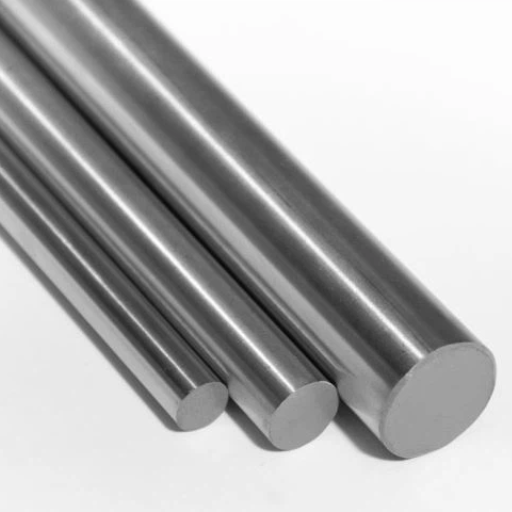
440 stainless steel is a high-carbon martensitic stainless steel known for its good hardness and strength. Its usual chemical composition is:
- Carbon (C): 0.65–1.20% – Enhances hardness and wear resistance.
- Chromium (Cr): 16.0–18.0% – Provides corrosion resistance and strength.
- Manganese (Mn): Up to 1.00% – Improves toughness and wear resistance.
- Silicon (Si): Up to 1.00% – Enhances strength and resistance to oxidation.
- Phosphorus (P): Maximum of 0.04% – Kept low to maintain toughness.
- Sulfur (S): Maximum of 0.03% – Controlled to preserve machinability.
The elements cooperating make 440 stainless steel very durable and corrosion-resistant and are capable of being heat-treated to harden to a considerable state so that they would perform in heavy-duty industrial and tool applications.
Overview of 440 Stainless Steel Grades
440 stainless steels are separated into three primary grades offering different properties suitable for different applications. These grades are 440A, 440B, and 440C. These are all martensitic stainless steels of high carbon content. Having similar chemical compositions, differences occur mainly in carbon content which owes heavily to their mechanical and physical characteristics:
- 440A: This is the least carbon-containing grade with an average range of 0.6-0.75%. It is less hard when compared to other grades of 440, but it sustains well in terms of corrosion resistance as well as toughness. It is applied in cutlery and surgical instruments where corrosion resistance is the primary consideration.
- 440B: Classified halfway between 440A and 440C in terms of carbon-content (about 0.75-0.95%), it further comprises moderate hardness of adequate corrosion resistance and is usually made use of in the production of components that need durability and aesthetic finish.
- 440C: Having the highest carbon content that ranges from 0.95 to 1.20%, post heat treatment offers the best hardness and wear resistance. In the 440 series, it is the most popular grade with large applications in high-performance bearings, knives, and industrial tooling. It is also a little less corrosion-resistant as compared with 440A and 440B, due to increased hardness.
The 440 stainless steel grades have a variation that allows engineers and manufacturers to select the type best suited for joint consideration of hardness, toughness, and corrosion resistance. Moreover, each grade can be processed by annealing, tempering, or quenching to fulfill exact operating demands.
Comparison of 440A, 440B, and 440C
|
Parameter |
440A |
440B |
440C |
|---|---|---|---|
|
Carbon Content |
0.6-0.75% |
0.75-0.95% |
0.95-1.2% |
|
Hardness |
Moderately high |
Higher than 440A |
Highest among the three |
|
Corrosion Resistance |
Excellent |
Very good |
Good, slightly reduced |
|
Toughness |
Higher toughness |
Moderate toughness |
Lower toughness |
|
Wear Resistance |
Moderate |
Higher than 440A |
Excellent |
|
Machinability |
Easiest to machine |
Moderate machinability |
Difficult to machine |
|
Edge Retention |
Moderate |
Higher than 440A |
Best edge retention |
|
Applications |
Cutlery, surgical instruments |
Blades, springs, valves |
Bearings, industrial tools, knives |
|
Heat Treating Potential |
Can be hardened |
Can be hardened |
Highly hardenable |
|
Chromium Content |
16-18% |
16-18% |
16-18% |
Unique Properties of 440 Stainless Steel
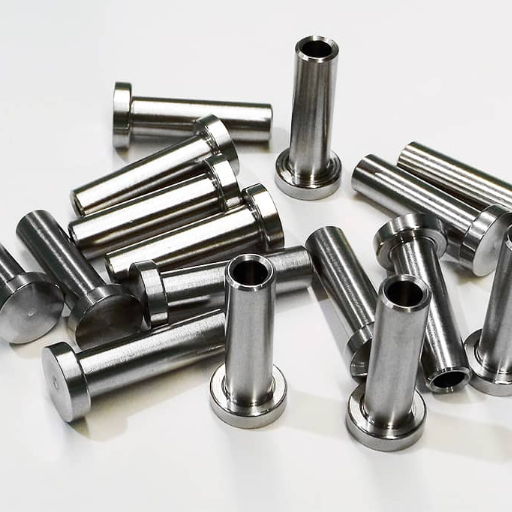
- High Hardness
Among the 440 stainless steel series, especially grade 440C, it achieves the greatest hardness after heat treatment, which by the Rockwell scale reaches hardness as high as HRC 58-65, making it one of the hardest stainless steels.
- Superior Corrosion Resistance
With chromium in the range of 16% to 18%, the 440 series stainless steels are capable of standing against rust and corrosion occurring in aggressive environments, thus suitable for industrial and high-moisture applications.
- Exceptional Wear Resistance
Because of its high carbon content and high hardness, the iron 440 demonstrates superior wear properties to specify it in tools and parts repeatedly subjected to stress and friction.
- High Edge Retention
Among stainless steels, the 440C grade is sought for use in cutting tools and knives because it could hold a sharp edge for a prolonged period.
- Heat Treatability
The heat treatment characteristic of 440 stainless steel allows manufacturers to achieve exquisite mechanical properties depending on respective considerations, thereby making a product hard and durable.
- Versatile Applications
A unique combination of properties found in the 440 series enables manufacturing of knives, surgical instruments, valves, and bearings, besides industrial tools. Different advantages are rendered by each grade 440A, 440B, and 440C, which fit different needs in application.
Mechanical Properties and Performance
The 440 series is an excellent balance between hardness, strength, and wear resistance, making it suitable for harsh applications. Among all grades, the carbon content in 440C is the highest and thus it obtains superior hardness grade HRC 56-60 after good heat treatment. Prolonged edge contents are one of the applications requiring such hardness in precision instruments and bearings.
The tensile strength of the 440 series ranges from 700 to 2,500 MPa, depending on its grade and subsequent processing methods. Its exceptional corrosion resistance, particularly after polishing, enhances its long-term performance in high-moisture and mildly acidic environments. Though, its mechanical performance has been made better by tempering and annealing processes which fill in for peculiarities imposed by operational demand. These properties collectively underscore the versatility and reliability of the 440 stainless steel series in critical industrial applications.
Corrosion Resistance and Durability
Considering the chromium content of 440 stainless steel between 16% to 18%, the stainless steel formation contains a passive oxide layer on the surface that is responsible for exceptional corrosion resistance. Therefore, the occurrence of oxidation and chemical attacks is greatly minimized in marine or industrial environments. Laboratory analysis showed that 440 stainless steel resisted pitting and crevice corrosion caused by chlorides better than other steels, thus making it prioritized in an environment subjected to salt and moisture attack. At the same time, it proves to be very tough, especially when optimally heat-treated, with a tensile strength as high as 1900 MPa, bearing out its wide applications in manufacturing structural parts and cutting tools that require strength and resistance to environmental degradation simultaneously.
Applications of 440 Stainless Steel
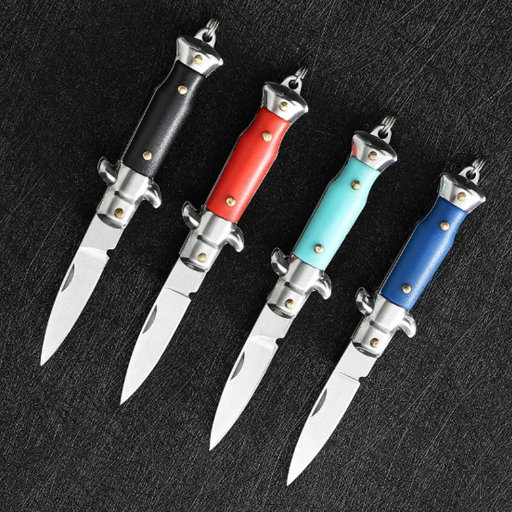
- Cutlery and Blades
Because it can be heat-treated to an outstanding hardness of 58-60 HRC, 440 stainless steel finds its application in the manufacture of premium-quality knives, surgical instruments, and other cutting tools. Its stakeholders value it in industrial as well as domestic environments for sharpness retention and stain resistance.
- Industrial Machinery Components
The wear resistance and tensile strength of 440 stainless steel help the mechanical stress that grades up to 1900 MPa meet in industrial machinery. Used very often for making gears, shafts, and valve components that require utmost precision and durability.
- Bearing Applications
The inherent nature of 440 stainless steel to resist wear and to be low in coefficient of friction provide the prime choice for ball bearings and roller bearings. The grounds on which these bearings are chosen are that they are placed in aerospace, automobile, and high-speed rotating equipment where the bearing is subjected to mechanical loads and corrosive environment.
- Medical and Dental Tools
Biocompatibility and corrosion resistance of surgical instruments, dental instruments, and other medical-grade instruments are aspects that set the type apart. Strength allows for reliability in precision work, while its high polish potential provides means for surfaces that can be kept hygienic and easy to clean.
- Marine Equipment
440 stainless steel remains suitable for application in highly moist and salt-exposed environments. Examples include propeller shafts, pump components, and various parts of marine-grade systems that require mechanical reliability in resistance to pitting corrosion.
- High-Performance Automotive Parts
Use in Manufacturing and Industrial Tools
The research into and usage of advanced materials applied to manufacturing and industrial tools have allowed industries to enhance their efficiencies, precision, and durability in industries. Specialized alloys and composites are frequently used in the manufacture of cutting tools, machine tool components, and molds because of their superior wear resistance and high-temperature strength. For example, tungsten carbide has become a common tool insert material because it retains good sharpness in adverse conditions, thereby limiting the number of tool replacements and downtime involved in the machining operation. Additionally, material applications have been carried far beyond by additive manufacturing (or 3D printing), which allows heat-resistant superalloys and carbon fiber dispersion composites to be fabricated in custom geometries. This has enhanced tool life and decreased manufacturing costs, thus cementing material sciences as an essential asset in industrial applications.
Cutlery and Kitchenware Applications
Materials science, together with industrial technology, has contributed greatly to the development of modern cutlery and kitchenware. High-grade stainless steel continues to be the best metal for knife-making and other utensils such as forks, spoons, and food containers, a material offering good corrosion resistance, hardness, and wear resistance. The advances in non-stick surface technologies, such as ceramic-based and PTFE-less surfaces, have boosted cookware performance with higher heat distribution and wear resistance. Cutting-edge ergonomic designs in coordination with ultralight-yet-strong materials such as titanium or composite polymers have been developed for comfort and usability, respectively. Now, antimicrobial coatings are in place to reduce bacterial growth on commonly touched surfaces, raising food-sanitary standards. These improvements collectively reveal the growing marriage of technology and practicality during cutlery and kitchenware manufacture.
Advantages and Limitations of 440 Stainless Steel
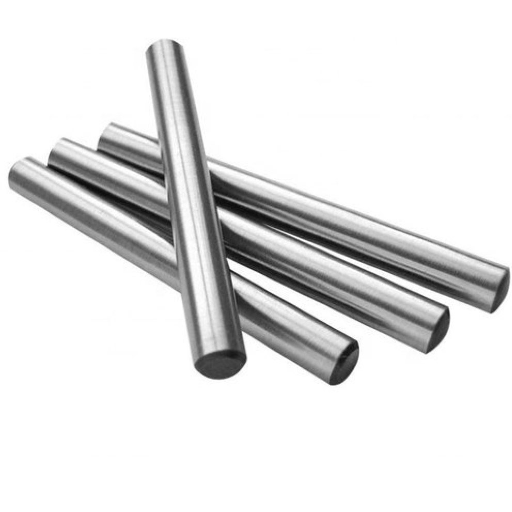
Advantages:
- High Hardness and Strength: Stainless steel 440 is famous because of its very high hardness suitable for applications in need of strength. Knives and cutting tools would be an example.
- Excellent Wear Resistance: Due to its carbon content, it offers wear and abrasion resistance. This gives tools and equipment a thriving life.
- Corrosion Resistance: Due to its chromium-rich composition, 440 stainless steel is corrosion resistant to an extent especially where mild chemical exposure to moisture occurs.
- Ease of Polishing: The alloy allows for a very good polishing finish, must be equally functional and beautiful.
Limitations:
- Brittleness: While stainless steel 440 is hard, it behaves somewhat brittle in high impact forces or stress.
- Challenging Workability: Because of the high hardness level, machining or shaping processes can be comparatively difficult with respect to softer steel grades.
- Limited High-Temperature Performance: At very high temperatures over an extended period, loss in hardness and structural integrity may occur.
- Cost: Usually more expensive than other forms of stainless steel, limiting its applications where a Set budget is placed on it.
High Hardness and Wear Resistance
This material gets used in any application that requires high hardness-wear resistance properties to ensure durability and longevity, thus going to industries such as manufacturing, aerospace, automotive, and construction. For example, the industrial tools and machinery use high hardness to keep their components from abrasion and remain dimensionally stable under high stresses. In addition, wear resistance in automotive parts such as engine components and bearings reduces the need for maintenance and enhances their mode of performance as time proceeds. The newer material science-related advances have worked for further refinement of the microstructure of these alloys for balancing hardness with toughness to newer heights that engineering demands. These set forth reasons for penetration in these fields, requiring outstanding mechanical performance.
Brittleness and Specific Use Cases
A property, which is the resistance of material against fracture or failure after little or no deformation, plays a role in deciding whether the particular material will suit a certain engineering application. While being very hard and wear-resistant, brittle materials are low in ductility and will fail catastrophically if suddenly loaded or impacted. To give an example, ceramics are strongest in the aerospace and electronic field owing to their very good thermal stability and electrical insulation; however, their use is kept to carefully selected areas where mechanical stress is predictable and minimal.
Developments in composite materials and engineered microstructures are intended to bypass the brittleness, which limits their practicality. Adding ductile metallic phases to traditional brittle ceramics has augmented the strength and toughness required for aircraft turbine blades and spacecraft components in extreme conditions. Likewise, brittle high-strength steels with specified heat treatment have been used for fine tools and construction machinery by balancing their awesome rigidity with fair ductility. All the said points stress the importance of engineering materials for the required properties in respect to performance.
Comparison with Other Stainless Steel Grades
|
Parameter |
440 Stainless Steel |
304 Stainless Steel |
316 Stainless Steel |
430 Stainless Steel |
|---|---|---|---|---|
|
Composition |
High carbon, chromium-rich |
Nickel, chromium-rich, low carbon |
Molybdenum, chromium, nickel-enriched |
Chromium and iron-focused, low nickel |
|
Corrosion Resistance |
Moderate, suitable for dry environments |
Excellent, resists oxidation and corrosion |
Superior, high resistance to chemicals |
Good, but lower than 304 or 316 |
|
Strength |
High due to carbon content |
Moderate tensile strength |
Moderate tensile strength |
Moderate to high tensile strength |
|
Hardness |
Extremely hard with heat treatment |
Lower hardness, more ductile |
Balanced hardness, ductility |
Harder than 304 but less than 440 |
|
Weldability |
Limited due to high carbon |
Excellent for most applications |
Very good, standard industry use |
Limited welding suitability |
|
Machinability |
Moderate, requires special techniques |
Good, easier to machine |
Good, requires attention to details |
Good, easier to machine than 440 |
|
Heat Resistance |
Moderate, may deform at high temperatures |
High, suitable for elevated use |
Excellent, resists scaling at high heat |
Moderate, maintains structure fairly well |
|
Applications |
Cutlery, blades, tools, bearings |
Kitchen equipment, piping, automotive |
Marine, medical, chemical equipment |
Appliances, decorative trims, automotive |
Maintenance and Care for 440 Stainless Steel Products
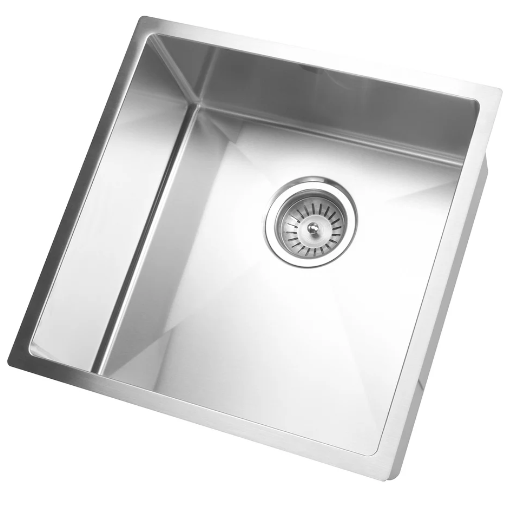
- Cleaning: Regularly clean with a mild soap and warm water. Avoid using abrasive cleaners that could scratch the surface. A soft cloth or sponge is recommended for wiping down.
- Drying: Dry it well after cleaning so that water spots could be avoided and also corrosion especially in a wet atmosphere.
- Polishing: Stainless steel polishing should be done occasionally to keep the finish and make the product resist corrosion better.
- Storage: Store in a dry, cool environment, away from moisture or corrosive substances. If not in use for a prolonged period, consider applying a light oil coating for extra protection.
- Regular Inspections: Check for signs of wear, pitting, or surface damage and address issues promptly to prevent further deterioration.
This way, structural integrity and aesthetics would be maintained and 440 stainless steel products would be capable of serving in very demanding applications.
Cleaning Methods and Best Practices
- Routine Cleaning: Use a soft cloth or sponge with warm water and a mild detergent to remove dirt and debris. This prevents the accumulation of contaminants that could compromise the steel’s passive layer.
- Avoid Abrasive Materials: Avoid steel wool or abrasive cleaners as they would, in fact, damage the surface. These scratches also appear as sites for corrosion and thus disfigure the looks.
- Use of Non-Chloride Solutions: Cleaners containing chloride should be avoided as chloride may cause pitting corrosion in stainless steels. Instead, use stainless steel cleaners recommended to be pH-neutral or alkaline in nature.
- Periodic Deep Cleaning: Baking soda paste with water can be put on for stubborn stains or sticky residues on their surface for a little while, and then lightly scrubbed and rinsed down with plain water and dried using a lint-free cloth.
- Passivation Practices: If exposed to even harsh environments, periodically passivating with nitric or citric-acid-based treatments help maintain the integrity of the oxide layer; this comes in handy especially for highly corrosive settings.
Protective Measures to Enhance Longevity
- Regular Cleaning and Maintenance: For a protective layer to build up on any surface and remain intact, routine maintenance and cleaning must be considered. Stainless steel should not be cleaned with harsh chemicals but instead should be taken care of with mild detergents that are used with a smooth cloth or brush to lessen scratches that might harbor anything that can cause corrosion.
- Environmental Considerations: Minimizing exposure in aggressive environments such as industrial pollutions, road salt, or chlorine-containing media would extend the material life significantly. Here, one can lay protective coatings such as powder coatings or special sealants.
- Selection of Material Grades: Use of high-grade materials should be based on specific environmental exposures, for example, duplex or marine-grade stainless steels such as 2205 or 316 give a good resistance to corrosion, particularly in chloride-rich atmospheres.
- Stress Minimization Strategies: Mechanical stresses, which also include bending, welding, or extended exposure to vibrations, are capable of impairing structural members with the passage of time. The risk, however, can be minimized by carrying out stress-relief treatment after fabrication and following design criteria that prohibit sharp corners or abrupt changes of cross-section.
- Advanced Coating Technologies: High-performance preventive techniques are presented by modern protective coatings, such as thermal spray coatings or nano-coatings, against erosion, corrosion, and chemical attacks. These techniques also enhance surface resistance and help in retaining structural integrity under rigorous conditions.
Reference Sources
-
- Key Findings: Zinc electroplating significantly enhances the corrosion resistance of porous 440C stainless steel. The study used three different zinc electrolytes (acetate, sulfate, and chloride) and found that all improved the material’s durability.
-
- Key Findings: Partial solution treatment at 950°C resulted in higher hardness and strength due to the formation of M23C6 carbides and a high martensite content. In contrast, treatment at 1160°C led to larger austenite grains and lower mechanical strength.
-
Microstructures and Mechanical Properties of Austempering SUS440 Steel Thin Plates (2020):
- Key Findings: Austempering at 300°C for 90 minutes produced the best mechanical properties, including high fracture strength and reduced brittleness. The bainite matrix with fine carbides was identified as optimal for industrial applications.
Frequently Asked Questions (FAQs)
Q: What is the chemical composition of 440 stainless steel?
A: 440 stainless steel is a high-carbon steel alloy primarily composed of iron, chromium, and carbon. The chromium content typically ranges from 16% to 18%, providing significant corrosion resistance. The carbon content is usually between 0.60% and 0.75%, which contributes to the highest hardness of this grade. Other elements may include manganese, silicon, and molybdenum, enhancing its overall properties. This specific chemical composition makes 440 stainless steel suitable for various applications, especially where a strong and durable material is needed.
Q: What are the mechanical properties of 440c stainless steel?
A: The mechanical properties of 440c stainless steel are notable for their strength and hardness. This grade exhibits a tensile strength of approximately 600 MPa and a hardness rating that can reach up to 58 HRC after heat treatment. It also offers moderate corrosion resistance, making it ideal for applications exposed to mild acids and fresh water. The impact resistance is good, although it is not as high as that of austenitic stainless steel grades. Additionally, 440c is easily machined, which allows for versatile fabrication in various products, including cutting tools and blades.
Q: What are common applications for 440 stainless steel?
A: 440 stainless steel is widely used in manufacturing various products that require high hardness and moderate corrosion resistance. Common applications include knife blades, surgical instruments, and other cutting tools where edge retention is critical. The alloy’s ability to withstand wear and its good heat treat characteristics make it suitable for bearings and valves as well. Additionally, its use in stainless steel round bars and sheets allows for diverse constructions in both industrial and consumer markets. Thus, 440 stainless steel serves a vital role in industries that demand high-performance materials.
Q: What is the heat treatment process for 440 stainless steel?
A: The heat treatment process for 440 stainless steel typically involves hardening followed by tempering. First, the steel is heated to a temperature between 1000°F and 1900°F, depending on the desired hardness. This step transforms the microstructure to enhance its mechanical properties. After hardening, the steel is cooled rapidly, often by quenching in oil or air. Tempering is then performed at a lower temperature to relieve stresses and improve toughness. This careful heat treatment process ensures that 440 stainless steel achieves its highest strength and hardness while maintaining reasonable ductility for various applications.

